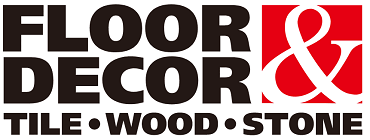Maintaining a sterile and hygienic environment in medical facilities is of utmost importance to ensure patient safety and prevent the spread of infections. A crucial aspect of this cleanliness regimen involves the proper cleaning of medical equipment. This step-by-step guide provides healthcare professionals with a comprehensive approach to effective medical equipment cleaning, emphasizing the importance of maintaining a pristine environment.
1. Understanding the Importance of Medical Equipment Cleaning
Clean medical equipment is integral to patient safety. Contaminated equipment can harbor pathogens and contribute to the transmission of infections. In healthcare facilities, where the well-being of patients is the top priority, a thorough cleaning protocol is essential.
2. Preparing for the Cleaning Process: Gather Necessary Supplies
Before delving into the cleaning process, gather the necessary supplies. This includes medical-grade disinfectants, cleaning cloths, disposable gloves, and any manufacturer-recommended cleaning solutions specific to the equipment being cleaned. For a comprehensive approach, consider partnering with professional services of commercial cleaning in San Diego to ensure the highest standards of cleanliness.
3. Conducting a Pre-Cleaning Assessment: Identify Contaminants
Before initiating the cleaning process, assess the equipment’s condition. Identify visible contaminants, stains, or any residual substances that may require special attention. This assessment helps tailor the cleaning approach to the specific needs of each piece of equipment.
4. Disassembling Equipment Safely: A Precursor to Thorough Cleaning
Certain medical equipment may have removable parts or components. Safely disassemble the equipment according to manufacturer guidelines. This step ensures that every nook and cranny is accessible for thorough cleaning. Professional commercial cleaning services may offer specialized knowledge in handling intricate equipment components.
5. Cleaning with the Right Solutions: Selecting Appropriate Disinfectants
Selecting the right disinfectants is crucial. Different medical equipment may require specific cleaning solutions to ensure effective disinfection without causing damage. Consult manufacturer guidelines or seek advice from infection control experts to choose the most suitable disinfectant for each piece of equipment. Commercial cleaning services can provide insight into industry-approved cleaning agents.
6. Applying Disinfectants Methodically: Achieving Uniform Coverage
Apply the chosen disinfectant methodically, ensuring even coverage across all surfaces. Pay extra attention to high-touch areas and any regions identified during the pre-cleaning assessment. This step lays the foundation for thorough disinfection. Professional commercial cleaning services may employ advanced techniques to ensure uniform disinfection.
7. Wiping Down Surfaces: Eliminating Residual Contaminants
Use clean, disposable cloths to wipe down surfaces. Employ a systematic approach, starting from the cleanest areas and progressing to more contaminated regions. Dispose of used clothes appropriately to prevent cross-contamination. For a meticulous approach, consider partnering with commercial cleaning services for thorough cleaning services.
8. Addressing Hard-to-Reach Areas: Q-tips and Brushes
For intricate or hard-to-reach areas, utilize Q-tips or brushes. These tools allow healthcare professionals to access crevices and corners that may be challenging to clean with standard cloths. Thoroughness is key to comprehensive medical equipment cleaning. Commercial cleaning services can provide specialized tools and expertise for hard-to-reach areas.
9. Reassembling Equipment: Ensuring Proper Configuration
After cleaning, carefully reassemble the equipment according to the manufacturer’s guidelines. Ensure that all components are securely fitted and the equipment is restored to its functional form. This step is critical to maintaining the equipment’s effectiveness and safety. Professionals in commercial cleaning services can assist in the proper reassembly of intricate medical equipment.
10. Final Inspection and Quality Assurance: Verifying the Cleaning Outcome
Conduct a final inspection to verify the cleanliness of the medical equipment. Check for any remaining contaminants or signs of damage. This quality assurance step ensures that the equipment meets the highest standards of cleanliness and safety. Professional commercial cleaning services can assist in the final inspection to guarantee compliance with industry standards.
11. Documenting the Cleaning Process: Building a Comprehensive Record
Maintain detailed records of the cleaning process for each piece of medical equipment. Documentation should include the date, cleaning agents used, and any specific challenges encountered. This record-keeping supports compliance with regulatory standards and facilitates equipment maintenance tracking. Commercial cleaning services may provide documentation for regulatory purposes.
12. Continuous Training and Improvement: Adapting to Evolving Standards
Medical equipment cleaning protocols may evolve with advancements in infection control standards. Ensure that healthcare professionals receive continuous training on updated cleaning practices. This commitment to ongoing education, supported by insights from commercial cleaning services, supports a proactive approach to infection prevention.
Conclusion
In healthcare settings, where patient safety is paramount, meticulous medical equipment cleaning is non-negotiable. This step-by-step guide provides a comprehensive approach to ensuring that each piece of equipment is thoroughly cleaned and disinfected. By adhering to these meticulous cleaning practices, healthcare facilities can elevate their infection control measures, creating a safer and healthier space for both patients and healthcare professionals.





